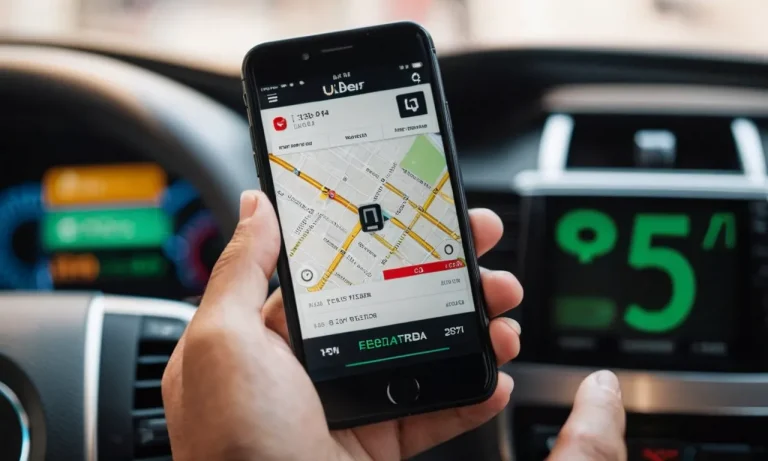How Do Airport Scanners Detect Drugs?
Trying to sneak illicit substances through airport security can have serious legal consequences. Advanced imaging technology and drug trace detection systems allow transportation security officers to catch concealed narcotics.
If you’re short on time, here’s a quick answer to your question: Airport scanners use various technologies like millimeter wave scanners, X-ray scanners, ion mobility spectrometry, and computed tomography to detect drugs by analyzing images for concealed items or traces of narcotic substances.
In this comprehensive guide, we’ll explore the different technologies used by airport scanners to catch drug smugglers. We’ll look at how whole body imagers see through clothing to find hidden packages.
We’ll explain how trace detection systems sniff out tiny particles of narcotics on luggage and clothing. We’ll also overview some of the latest developments airport security is making to stay one step ahead of creative traffickers.
Millimeter Wave and Backscatter X-ray Full Body Scanners
What are millimeter wave and backscatter scanners?
Millimeter wave and backscatter X-ray full body scanners are advanced technologies used in airports and other high-security areas for detecting hidden contraband, including drugs. These scanners provide a non-invasive method of screening individuals for potential threats without the need for physical contact or pat-downs.
The millimeter wave scanner uses radio waves in the millimeter wave frequency range to create a detailed image of the body. It is a safe and low-energy technology that can accurately detect hidden objects on the body’s surface.
On the other hand, the backscatter X-ray scanner utilizes a low-intensity X-ray beam that is emitted from two different angles to produce a two-dimensional image of the body. This technology can penetrate clothing and reveal objects that may be hidden underneath, such as drugs or other contraband.
How do they detect drug contraband?
Both millimeter wave and backscatter scanners are capable of detecting drug contraband on a person’s body. These scanners highlight anomalies or irregularities on the body’s surface, which may indicate the presence of hidden objects, including drugs.
The millimeter wave scanner creates a three-dimensional image of the body, which is then analyzed by security personnel. Any suspicious areas or objects are further investigated using manual inspection or additional screening techniques.
The backscatter X-ray scanner produces a two-dimensional image that reveals the shape, size, and density of objects on the body. Drugs and other contraband can be distinguished from normal body tissues and clothing, allowing security personnel to identify potential threats.
It is important to note that both technologies prioritize passenger privacy and employ advanced algorithms to automatically detect potential threats while obscuring sensitive body details. These scanners are designed to balance security needs with passenger comfort and privacy.
For more information on millimeter wave and backscatter scanners, you can visit the websites of the Transportation Security Administration (www.tsa.gov) or the International Air Transport Association (www.iata.org).
X-Ray Scanners for Carry-On and Checked Luggage
What are X-ray scanners?
X-ray scanners are advanced imaging machines used in airports to detect prohibited and potentially dangerous items in both carry-on and checked luggage. These scanners utilize X-ray technology to create detailed images of the contents of bags and suitcases, allowing airport security personnel to identify any suspicious items that may pose a threat to the safety of passengers and the aircraft.
How they detect drug contraband
X-ray scanners are highly effective in detecting drug contraband due to their ability to identify different types of organic and inorganic materials. These scanners generate high-energy X-rays that pass through the luggage, creating images based on the varying densities of the objects inside.
When it comes to drugs, certain substances like cocaine, heroin, and methamphetamine have distinctive signatures that can be easily identified by the X-ray scanner’s algorithms.
For example, cocaine appears as a dense, block-like object on the X-ray image, while heroin may resemble a powdery substance. These distinct patterns allow security personnel to quickly identify potential drug smuggling attempts.
Additionally, X-ray scanners can also detect hidden compartments or unusual shapes within bags that may indicate the presence of drugs.
Limitations of X-ray detection
Although X-ray scanners are highly effective in detecting drug contraband, they do have certain limitations. For instance, some types of drugs, such as marijuana, may have a similar density to other benign organic materials like food or clothing.
This can make it more challenging for security personnel to accurately differentiate between harmless items and illicit substances.
Furthermore, sophisticated drug smugglers may employ various concealment techniques to evade detection, such as masking drugs with other materials or using specially designed containers. In such cases, X-ray scanners alone may not be sufficient to detect the presence of drugs.
Therefore, airports employ a multi-layered approach to security, including the use of trained sniffer dogs, manual inspections, and intelligence-based profiling to enhance the effectiveness of drug detection efforts.
For more information on airport security and the technology used in detecting drugs, you can visit the Transportation Security Administration (TSA) website at www.tsa.gov.
Ion Mobility Spectrometry Trace Detection
What is ion mobility spectrometry?
Ion Mobility Spectrometry (IMS) is a technique used in airport scanners to detect traces of drugs and other illicit substances. It is a highly sensitive method that can identify molecules based on their size and shape.
IMS works by ionizing molecules in the air sample and then measuring the time it takes for the ions to travel through a drift tube. This information can be used to determine the identity of the substances present.
How IMS systems detect drug traces
IMS systems used in airport scanners are capable of detecting even minute traces of drugs. When passengers or their belongings pass through the scanner, the air surrounding them is sampled and analyzed.
If any drug molecules are present, they will be ionized and their mobility through the drift tube will be measured. The data obtained is then compared to a database of known drug profiles to identify any matches. If a positive match is found, further investigation may be conducted.
Challenges with trace detection methods
While IMS is a powerful tool for drug detection, it is not without its challenges. One of the main challenges is the presence of background interference. Airport environments are filled with various chemical compounds, such as cleaning agents and perfumes, that can interfere with the detection process.
To overcome this, IMS systems are designed to filter out common background substances and focus on specific target compounds.
Another challenge is the need for ongoing calibration and maintenance of the IMS systems. Regular calibration is essential to ensure accurate and reliable results. Additionally, the sensitivity of IMS systems can be affected by environmental factors such as temperature and humidity.
Therefore, it is crucial to maintain optimal operating conditions for the scanners.
Computed Tomography Scanning Systems
What is computed tomography (CT)?
Computed tomography (CT) is a medical imaging technique that uses X-rays and computer processing to generate detailed cross-sectional images of the body. It is commonly used in hospitals and clinics to diagnose and monitor various medical conditions.
CT scanners use a rotating X-ray beam and detectors to capture multiple images from different angles, which are then processed to create a three-dimensional representation of the scanned object.
How CT scanners find concealed drugs
CT scanning systems have become increasingly popular in airport security due to their ability to detect concealed drugs. These scanners use advanced algorithms and image processing techniques to identify suspicious substances in luggage or on a person’s body.
The scanners work by analyzing the density and composition of the scanned object. Different materials have different X-ray absorption properties, and drugs can be distinguished from other substances based on these properties.
CT scanners can detect even small amounts of drugs hidden inside everyday objects or in body cavities.
The images generated by the CT scanner are analyzed by trained security personnel who look for irregularities or anomalies that may indicate the presence of drugs. These scanners can identify a wide range of illicit substances, including cocaine, heroin, marijuana, and synthetic drugs.
Benefits over traditional X-ray
CT scanning systems offer several advantages over traditional X-ray machines when it comes to detecting drugs. Firstly, CT scanners provide more detailed and accurate images, allowing security personnel to identify drugs with greater certainty.
This reduces the chances of false positives or false negatives, improving the overall effectiveness of drug detection at airports.
Additionally, CT scanners can generate 3D images that provide a more comprehensive view of the scanned object. This helps security personnel visualize the exact location and shape of concealed drugs, making it easier to locate and confiscate them.
Furthermore, CT scanners are capable of detecting drugs hidden inside complex structures or mixed with other materials. This makes it difficult for smugglers to evade detection by using sophisticated concealment techniques.
The Future of Airport Drug Detection
As technology continues to advance, so does the field of airport drug detection. With the ever-increasing need for improved security measures, airports around the world are constantly looking for ways to enhance their abilities to detect drugs and other illicit substances.
In this article, we will explore some of the exciting developments in this area, including the use of artificial intelligence and automated threat recognition, as well as new detection technologies on the horizon.
Artificial intelligence and automated threat recognition
One of the most promising advancements in airport drug detection is the integration of artificial intelligence (AI) and automated threat recognition systems. These systems use complex algorithms and machine learning techniques to analyze large amounts of data and identify potential threats, including drugs, with a high level of accuracy.
By continuously learning and adapting, these AI systems can stay ahead of evolving smuggling techniques and help security personnel detect drugs more effectively.
Furthermore, AI-powered scanners can detect drugs hidden in various ways, such as inside luggage, clothing, or even within the human body. These technologies have the potential to greatly enhance security levels at airports, making it increasingly difficult for drug traffickers to go undetected.
Some airports have already started implementing AI-based drug detection systems, and the results have been impressive. Not only are these systems able to identify a wide range of illicit substances, but they also reduce the number of false positives, which can help streamline the screening process and minimize inconvenience for travelers.
New detection technologies on the horizon
In addition to AI, there are several other exciting detection technologies on the horizon that show great promise in the fight against drug smuggling at airports. These technologies leverage advancements in areas such as spectroscopy, nanotechnology, and molecular imaging to provide more accurate and efficient drug detection.
For example, researchers are exploring the use of portable spectrometers that can quickly analyze the chemical composition of substances, allowing security personnel to identify drugs on the spot. This technology could potentially revolutionize the way drugs are detected, enabling faster and more targeted screening processes.
Nanotechnology is another field that holds significant potential for airport drug detection. By utilizing nanoparticles that can bind to specific substances, scientists are developing sensors that can detect even trace amounts of drugs with incredible precision.
These sensors can be integrated into existing scanning equipment, making it easier to deploy this technology on a large scale.
Conclusion
Advanced imaging and trace detection technologies give airport security multiple methods for intercepting smuggled contraband. While ingenious traffickers are always looking for new concealment tricks, technology continues to evolve to stay one step ahead.
Understanding how scanners detect drugs can help inform both airport security practices and the traveling public.








